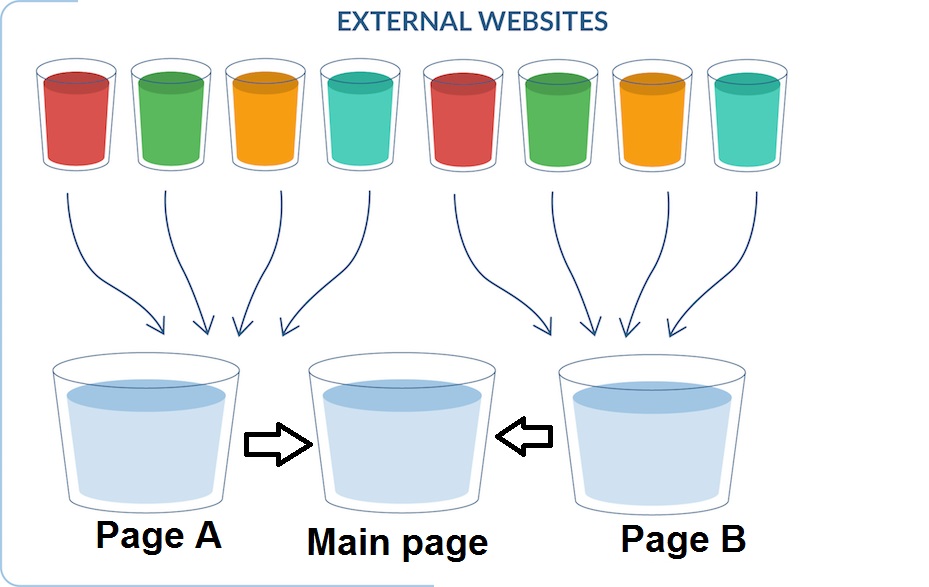Sitemap generation and its benefits
In the vast and intricate landscape of website design and search engine optimization (SEO), a crucial element that often remains behind the scenes is the site map. Site maps, blueprint for a website’s architecture, gives organized and user-friendly digital environment.Here we will discussing about sitemap generation.They outline the hierarchical structure of pages, helping users and search engines navigate content seamlessly.
This article embarks on an in-depth exploration of site map generation—a process that is both an art and a science. We will delve into the significance of site maps, their various types, the methodologies for creating them, and their pivotal role in enhancing website structure, user experience, and search engine visibility.
A well-designed site map empowers users to quickly locate desired information, promoting user satisfaction and reducing bounce rates. It acts as a virtual compass, guiding visitors through the maze of webpages with ease.
Search engines rely on site maps to crawl and index webpages effectively. By providing a clear roadmap of a website’s content, site maps enhance search engine visibility, potentially leading to higher rankings and organic traffic.Without a proper sitemap setup, indexing is much harder. Google might take more time to find your pages (especially if they live deeper in the site architecture or are orphaned), and your products, images, and videos might not show up in the search engine results pages (SERPs) — losing out on potential revenue.
The Multifaceted Types of Site Maps
XML Sitemaps
XML sitemaps are designed for search engines, presenting a list of URLs and metadata that aid in crawling and indexing. They provide search engines with essential information about a website’s structure, priority pages, and frequency of updates.
HTML Sitemaps
HTML sitemaps are primarily designed for human users, offering a visual overview of a website’s structure and content. They act as a navigational aid, providing quick access to different sections and pages of the website.
Visual Site Maps
Visual site maps employ graphical representations to showcase the hierarchical relationship between webpages. They offer a bird’s-eye view of the website’s architecture, aiding designers and stakeholders in conceptualizing and refining website structure.

Prioritize user experience by arranging pages in a logical and intuitive order. Group related content together and ensure that key pages are easily accessible from the site map.
Distribute internal links strategically within the site map to promote a balanced flow of authority and relevance across different sections of the website.
Ensure that the site map reflects the website’s main navigation menu, creating a consistent user experience and minimizing confusion. Utilize specialized tools and plugins that automatically generate XML sitemaps by crawling the website’s pages and gathering relevant information. Manually coding an XML sitemap allows for greater customization and control over the inclusion and priority of specific pages.
Regularly test and validate site maps using tools like Google Search Console to identify errors or issues that may affect search engine indexing.
Benefit of using sitemap in seo prospective
In the dynamic realm of search engine optimization (SEO), where every digital footprint matters, site maps emerge as invaluable tools that often remain hidden from plain view. This essay embarks on a comprehensive exploration of the advantages of using site maps in SEO. From enhancing crawlability and indexation to facilitating user experience and elevating search rankings, we delve into the multifaceted benefits that site maps bring to the forefront of successful SEO strategies.
1. Empowering Crawlability and Indexation
Start by including a navigation menu, footer links, and contextual links within your content.If you’re in the early stages of website development, creating a logical site structure can also help you set up a strong internal linking foundation. A logical site structure organizes your website into categories. Then those categories link out to individual pages on your site.
2.Providing Clear Pathways
Site maps serve as a GPS system for search engine crawlers, guiding them through the intricate web of a site’s content. By presenting a structured list of URLs, site maps ensure that every page has a designated path for crawling, reducing the risk of pages being overlooked.
3. Accelerating Indexation
Site maps expedite the process of indexing by presenting search engines with a comprehensive view of a website’s pages. This proactive approach ensures that new and updated content is quickly included in search engine databases.
4. Elevating User Experience
Search engine bots love high-quality content. When your content is well-written, informative, and relevant to users, it can attract more attention from search engines. Search engines want to deliver the best results to their users. So they prioritize crawling and indexing pages with top-notch content. Focus on creating original, valuable, and well-written content.
5. Enhancing Navigational Ease
Site maps cater to human users by offering a user-friendly alternative navigation option. Users can find specific pages or sections quickly, especially when the website’s primary navigation menu is complex or multi-layered.
6. Reducing Bounce Rates
An intuitive site map layout reduces user frustration and encourages exploration, ultimately leading to extended user sessions and decreased bounce rates—a positive signal for search engines.
7. Amplifying Search Engine Visibility
As technology continues to advance, the future of site map generation holds exciting possibilities. Dynamic site maps that adapt to user behavior and AI-powered algorithms that optimize site maps for search engines may become standard practices.
8. Streamlining Accessibility
Site maps ensure that search engines can access content even if certain pages have complex navigation or limited external links. This accessibility translates to better search engine visibility.
9. Prioritizing Content
XML sitemaps allow website owners to assign priority levels to different pages, signaling to search engines the relative importance of each page. This strategy influences the frequency and depth of search engine crawls.
10. Navigating Dynamic and Large Websites
Technical issues can prevent search engine bots from effectively crawling and indexing your website. If your website has slow page load times, broken links, or redirect loops, it can hinder bots’ ability to navigate your website. Technical issues can also prevent search engines from properly indexing your webpages. For instance, if your website has duplicate content issues or is using canonical tags improperly, search engines may struggle to understand which version of a page to index and rank.Its also help to navigating dynamic and large websites easily by find the number of pages, links and its date of publishing.
11. Managing Complex Structures
For websites with intricate hierarchies or extensive content, site maps simplify navigation and ensure that all pages receive due attention from search engines.
12. Handling Multimedia Content
Site maps accommodate various content types, including images, videos, and documents, making them indispensable for multimedia-rich websites seeking enhanced visibility.
13. Voice Search and Mobile Optimization
As voice search and mobile devices shape the digital landscape, site maps stand poised to play a pivotal role in ensuring seamless experiences across platforms. Integrating voice-specific site maps and optimizing for mobile responsiveness will become essential for SEO success.
14. Global Accessibility
For websites catering to diverse linguistic and cultural audiences, site maps aid in effectively presenting content variations, language options, and targeted pages to users across different regions.
15. Geo-Targeting Opportunities
By strategically structuring site maps, businesses can leverage geo-targeting to tailor content for specific regions, enhancing local search visibility and engaging international users.
16. Enhancing SEO Diagnostic Tools
As the digital horizon expands and technology evolves, the journey of site map generation continues. By embracing the art of user-centric organization and mastering the science of automated tools, website owners and designers can create a virtual compass that guides both users and search engines through the complex labyrinth of the digital terrain, leading to enhanced discoverability, engagement, and success in the ever-evolving realm of the internet.
17. Error Identification
Site maps serve as diagnostic tools that help identify errors or issues within a website’s structure. Regularly monitoring site maps can reveal broken links, duplicate content, and other issues that may hinder SEO performance.
18. Insights into Crawling Behavior
Analyzing site map data provides insights into search engine crawling patterns, shedding light on which pages are frequently crawled, which ones are ignored, and potential areas for improvement.
19. Strengthening Mobile-Friendly Optimization
As mobile usage continues to rise, having separate mobile-specific site maps ensures that search engines index and display mobile-optimized content correctly.
20. Accelerated Mobile Pages (AMP)
For websites implementing AMP, integrating AMP-specific site maps ensures that these lightning-fast pages are efficiently crawled and indexed by search engines.
21. Maximizing E-Commerce Impact
Your sitemap (or, more likely, sitemaps) helps search engines understand the pages on your site and all of the products you offer — so they can better show your pages to searchers. Sitemaps can also help guide visitors through your site to find what they’re looking for and discover products they never knew existed.
22. Product Discovery
E-commerce sites benefit from site maps by facilitating the discovery of product pages, categories, and filters, helping potential buyers find desired products more efficiently.
23. Seasonal Campaigns
Site maps aid in promoting seasonal or time-sensitive campaigns by ensuring that special landing pages receive prompt indexation and visibility during peak shopping periods.
24. Complementary with Keywords
Site maps align seamlessly with keyword optimization efforts, allowing strategic inclusion of targeted keywords within anchor text and metadata, thus reinforcing on-page SEO.
25. Link Equity Distribution
By including internal links within site maps, website owners can distribute link equity more evenly across important pages, boosting their SEO potential.
In a digital landscape defined by rapid change and fierce competition, the strategic integration of site maps becomes a hallmark of SEO excellence. By harnessing the power of site maps to empower search engines, engage users, and amplify organic reach, website owners and SEO practitioners can forge a trajectory toward sustained growth, discoverability, and triumph in the ever-evolving arena of online visibility.

In the intricate dance between websites, search engines, and users, site maps emerge as silent choreographers that orchestrate harmonious interactions. This essay has unveiled the manifold benefits of utilizing site maps in SEO, showcasing their pivotal roles in crawlability, indexation, user experience, and search engine visibility.
As the digital horizon continues to expand and user behaviors evolve, the strategic integration of site maps becomes an indispensable element of effective SEO. By harnessing their power to guide search engines, enhance user journeys, and amplify search rankings, website owners and SEO practitioners can navigate the ever-changing tides of the digital realm with confidence, forging a path toward discoverability, engagement, and sustained success.
How to Improve Crawlability and Indexability
Submitting your sitemap file to Google helps get your pages crawled and indexed. If you don’t already have a sitemap, create one using a sitemap generator tool like XML Sitemaps. Open the tool, enter your website URL, and click “Start.”
In web there is some tool availiable which can create the sitemap easily in couple of minutes. The tool will automatically generate a sitemap for you. But the main problem of those sitemap is these are static which means the all post or pages what published it can create immediately. But new upcoming pages and link not able to publish. So when you consider to use those tools then you need to create the sitemap time to time and those are manual process.Download your sitemap and upload it to the root directory of your site.
For example, if your site is www.essentiallists.com, then your sitemap should be located at www.essentiallists.com/sitemap.xml. Once your sitemap is live, submit it to Google via your Google Search Console (GSC) account. After activation, navigate to “Sitemaps” from the sidebar. Enter your sitemap URL and click “Submit.”This improves the crawlability and indexation of your website.Normally the xml site map are accepted here. Also you can upload feeds but html sitemap will some time give errors.
In the intricate landscape of web design and SEO, site map generation emerges as a cornerstone of effective website structure and user experience. This essay has unveiled the art and science of site map generation, underscoring its significance, methodologies, and impact on search engine visibility and user satisfaction.
By listing everything on your website, sitemaps help search engines understand the relationships between your pages, images, and products. Search engines use these files to crawl your website and index your pages, so that your content can show up in the most relevant way in search results. In turn, this brings traffic to your site and can drive sales.






